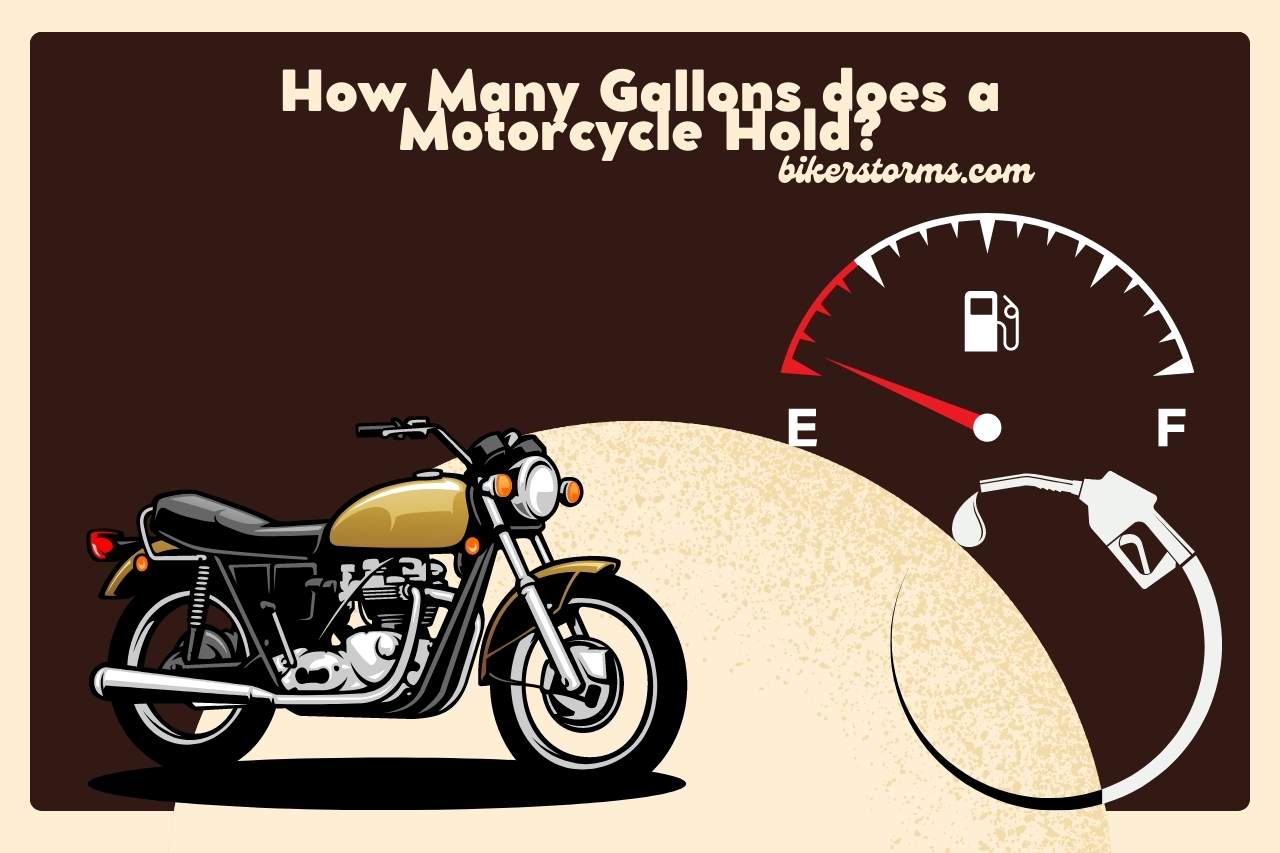How Many Gallons does a Motorcycle Hold? Fuel Capacity Considerations!
It is crucial to understand the fuel capacity of their vehicles for riders of motorbikes. Depending on the model, motorcycles can typically contain 1.5 to 8.5 gallons of gas. The most typical range is between 3 and 6 gallons. Larger adventure and cruiser motorcycles often have the biggest gasoline capacities, whereas smaller motorcycles, typically in the 50cc to 250cc range, may have tanks holding 1.5 to 4 gallons. This article explores how many gallons a motorcycle holds.
How Many Gallons does a Motorcycle Hold?
The fuel capacity of motorcycles varies depending on their size and purpose. Lightweight motorcycles, like the Honda Grom and 125-250cc models, often have smaller fuel tanks ranging from 1 to 4 gallons.
Middle-weight motorcycles, including sportbikes and touring bikes, typically come with 3 to 7-gallon fuel tanks. Adventure and touring bikes, designed for long distances, might have larger tanks with 5 to 8 gallons capacity.
Heavy motorcycles with powerful 1000-2000cc engines, like sportbikes and cruisers, generally hold 4 to 8.5 gallons of gas. Weight considerations often impact sportbike designs, leading to smaller tanks of around 4-5 gallons.
Its cruisers may feature slightly larger tanks of 4.5 to 6 gallons. The fuel capacity varies across motorcycle categories to cater to their intended usage and performance needs.



What are the Factors that Affect Motorcycle Tank Capacity?
The capacity of a motorcycle’s gas tank is influenced by various factors beyond just its size and shape.
- Shape and Size of Gas Tank – The shape and size of a tank play a crucial role in determining its capacity. Tanks with irregular shapes or narrow necks may hinder complete filling, and deeper tanks tend to hold more fuel. The location of the gas cap also impacts capacity.
- Fuel Injection System – Motorcycles with fuel injection systems usually have smaller tanks than carbureted models due to their higher fuel efficiency.
- Riding Style and Conditions – Riding style, speed, traffic conditions, and terrain affect fuel consumption. High speeds and stop-and-go traffic can lead to higher consumption.
- Engine Size and Type – Larger engines typically consume more fuel than smaller ones. Variable valve timing, one of the most recent engine technologies, can improve fuel efficiency.
- Weight and Cargo – Heavier motorcycles and those carrying significant loads demand more fuel to operate efficiently.
Factors like these collectively determine a motorcycle’s actual range on a full tank. These factors must be considered by riders to plan their trips, calculate the fuel requirements of their motorcycles, and maximize fuel efficiency.
The interplay of these variables determines a motorcycle’s overall performance, range, and fuel consumption. Fuel capacity is simply one aspect of fuel efficiency.
What is Reserve Fuel Capacity in Bikes?
The reserve fuel capacity in motorcycles refers to a portion of the gas tank’s overall capacity, typically around 10-12%. This feature acts as a safety buffer to prevent riders from running out of fuel unexpectedly.
When the fuel level drops below a certain point in the tank, riders can switch to the reserve fuel using the ‘reserve switch.’
Despite common belief, most motorcycles have only one fuel tank with two outlets. A ‘reserve fuel outlet’ is located near the tank’s bottom, and a regular outlet is higher up. The reserve switch lets you choose between these outlets, usually with positions labelled NORMAL, RESERVE, and OFF.
While possible to run a motorcycle on reserve all the time, it could be better. The reserve setting serves as a backup, preventing the tank from completely emptying without warning.
Relying on the reserve could lead to unexpectedly running out of fuel. It is especially relevant for motorcycles lacking a fuel gauge.
Manual fuel taps or petcocks were used to control fuel flow to older motorcycles and cars. When the main fuel was depleted, the engine would sputter, prompting riders to switch to the reserve position to continue with a smaller known quantity of energy. This feature enhances the rider’s awareness of fuel levels and avoids complete fuel exhaustion.
How to Increase the Fuel Capacity of Motorcycles?
There are three primary methods to expand a motorcycle’s fuel capacity.
- Extra Fuel Cans – Attaching additional fuel cans to the motorcycle is a basic approach. This method can be unsafe and inconvenient due to the challenges of securely strapping down the cans. Stackable motorcycle gas cans offer a safer alternative. These cans can be mounted to the rear racks, providing 1-4 gallons of extra fuel each. They offer more stability and organization, minimizing the risks of loose fuel cans.
- Oversized Motorcycle Tanks – Large tanks can be installed for a safer and more permanent solution. These aftermarket tanks, available for various touring and adventure motorcycles, can hold up to 10-11 gallons of fuel. While they add weight to the bike, they provide a reliable and stable way to increase fuel capacity. Riders can choose not to fill the tank to its maximum if refuelling stations are accessible.
- Auxiliary Motorcycle Fuel Tanks – Another effective method involves installing an auxiliary fuel tank connected to the fuel line. These tanks typically hold 1-5 gallons of gas and can be turned on and off using a tap. They provide additional fuel without affecting the bike’s aesthetics or handling.
The choice of method depends on the rider’s preferences and needs. Oversized and auxiliary fuel tanks offer more convenience and safety than strapping extra fuel cans. Increasing fuel capacity is crucial for long journeys through remote areas, providing peace of mind and ensuring uninterrupted rides.
How Far Can You Go on a Full Tank?
The distance a motorcycle can travel on a full gas tank varies based on the bike’s model, engine size, and riding style. Generally, most motorcycles can cover 120 to 200 miles on a full tank.
Sport bikes can go between 120 to 250 miles, while touring models can reach distances of about 350 miles. Cruisers and dual-purpose bikes with larger tanks can cover 140 to 220 miles.
After the gas light comes on, you can usually drive 20 to 30 miles in a smaller vehicle or up to 50 miles in a larger one.
Calculating your maximum range involves dividing your fuel tank capacity by fuel efficiency and multiplying by cruising speed. Knowing your bike’s range helps you plan refuelling points during your ride.
Watch this One,
Video Credits – JerryRigEverything
You May Also Like







